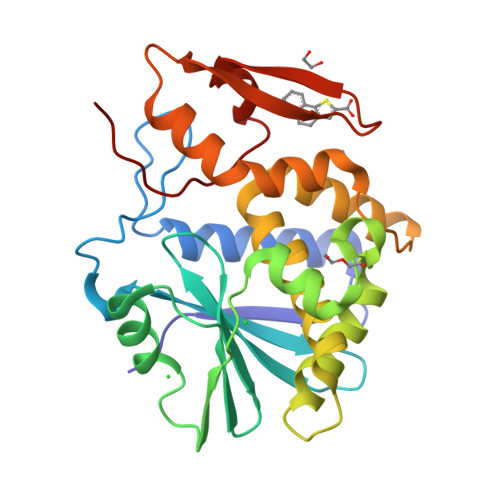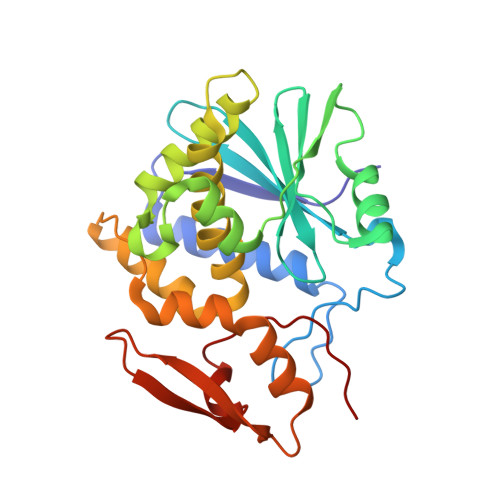Structure-based design and optimization of a new class of small molecule inhibitors targeting the P-stalk binding pocket of ricin.
Rudolph, M.J., Dutta, A., Tsymbal, A.M., McLaughlin, J.E., Chen, Y., Davis, S.A., Theodorous, S.A., Pierce, M., Algava, B., Zhang, X., Szekely, Z., Roberge, J.Y., Li, X.P., Tumer, N.E.(2024) Bioorg Med Chem 100: 117614-117614
- PubMed: 38340640
- DOI: https://doi.org/10.1016/j.bmc.2024.117614
- Primary Citation of Related Structures:
8T9V, 8TAB, 8TAD - PubMed Abstract:
Ricin, a category-B agent for bioterrorism, and Shiga toxins (Stxs), which cause food poisoning bind to the ribosomal P-stalk to depurinate the sarcin/ricin loop. No effective therapy exists for ricin or Stx intoxication. Ribosome binding sites of the toxins have not been targeted by small molecules. We previously identified CC10501, which inhibits toxin activity by binding the P-stalk pocket of ricin toxin A subunit (RTA) remote from the catalytic site. Here, we developed a fluorescence polarization assay and identified a new class of compounds, which bind P-stalk pocket of RTA with higher affinity and inhibit catalytic activity with submicromolar potency. A lead compound, RU-NT-206, bound P-stalk pocket of RTA with similar affinity as a five-fold larger P-stalk peptide and protected cells against ricin and Stx2 holotoxins for the first time. These results validate the P-stalk binding site of RTA as a critical target for allosteric inhibition of the active site.
Organizational Affiliation:
New York Structural Biology Center, 89 Convent Ave, New York, NY 10027, United States.






















